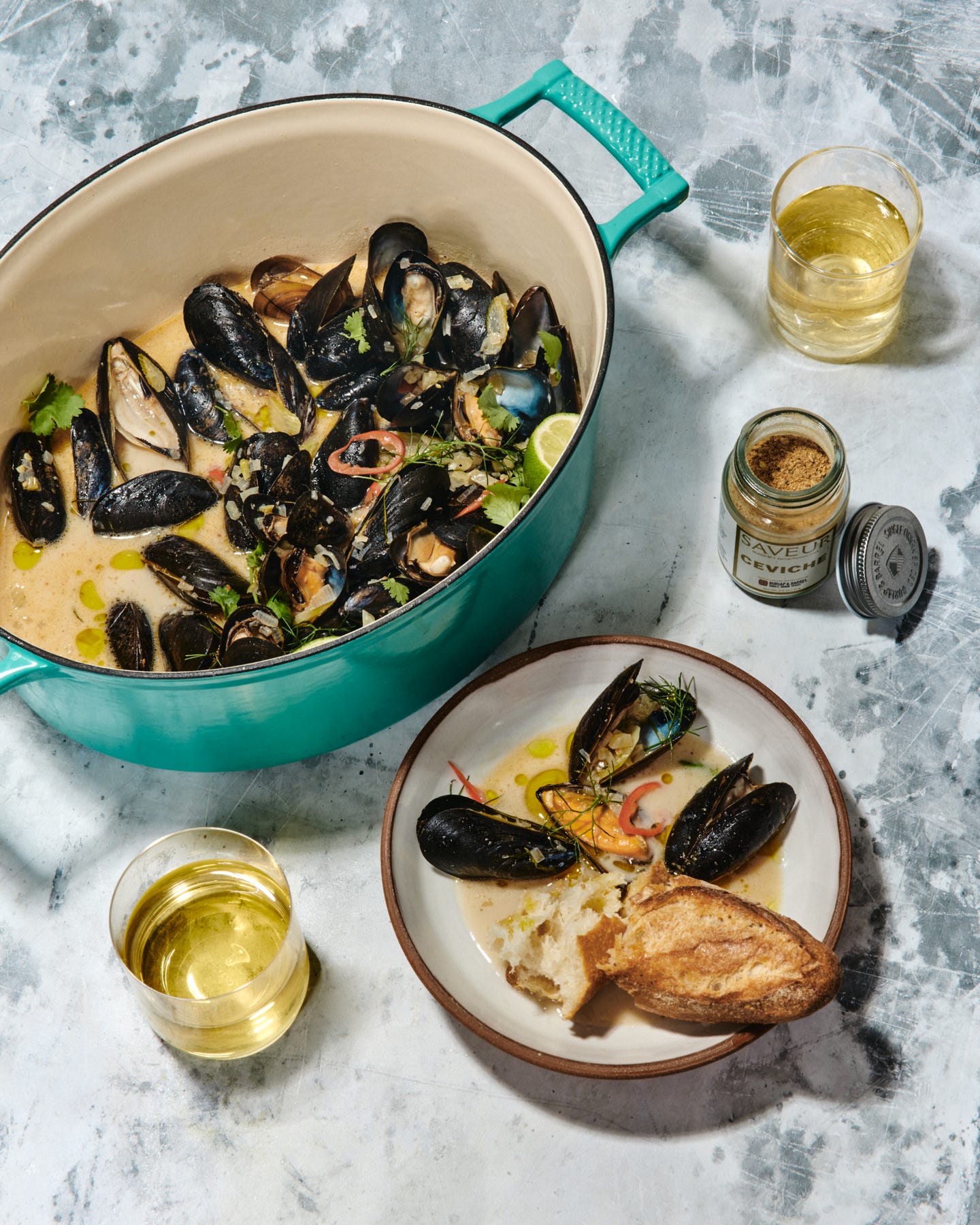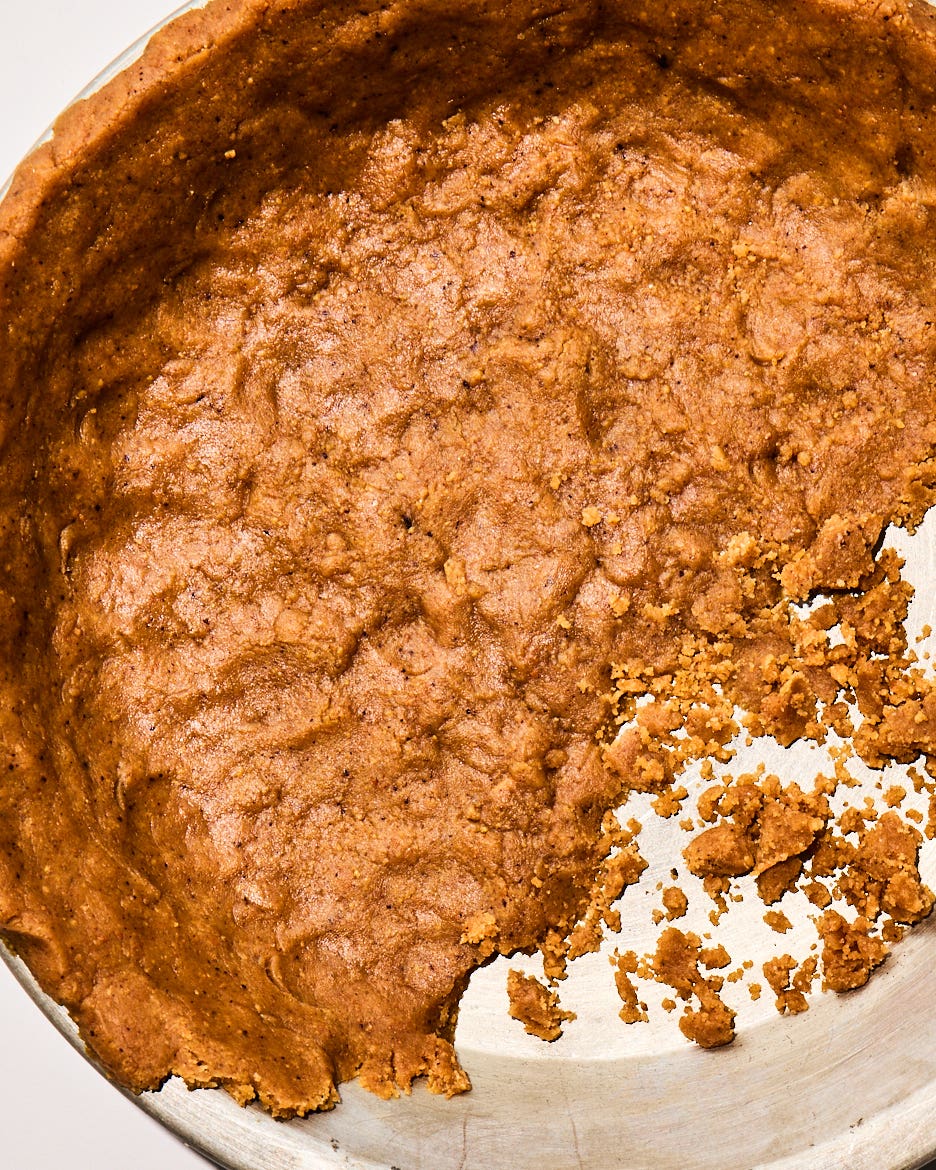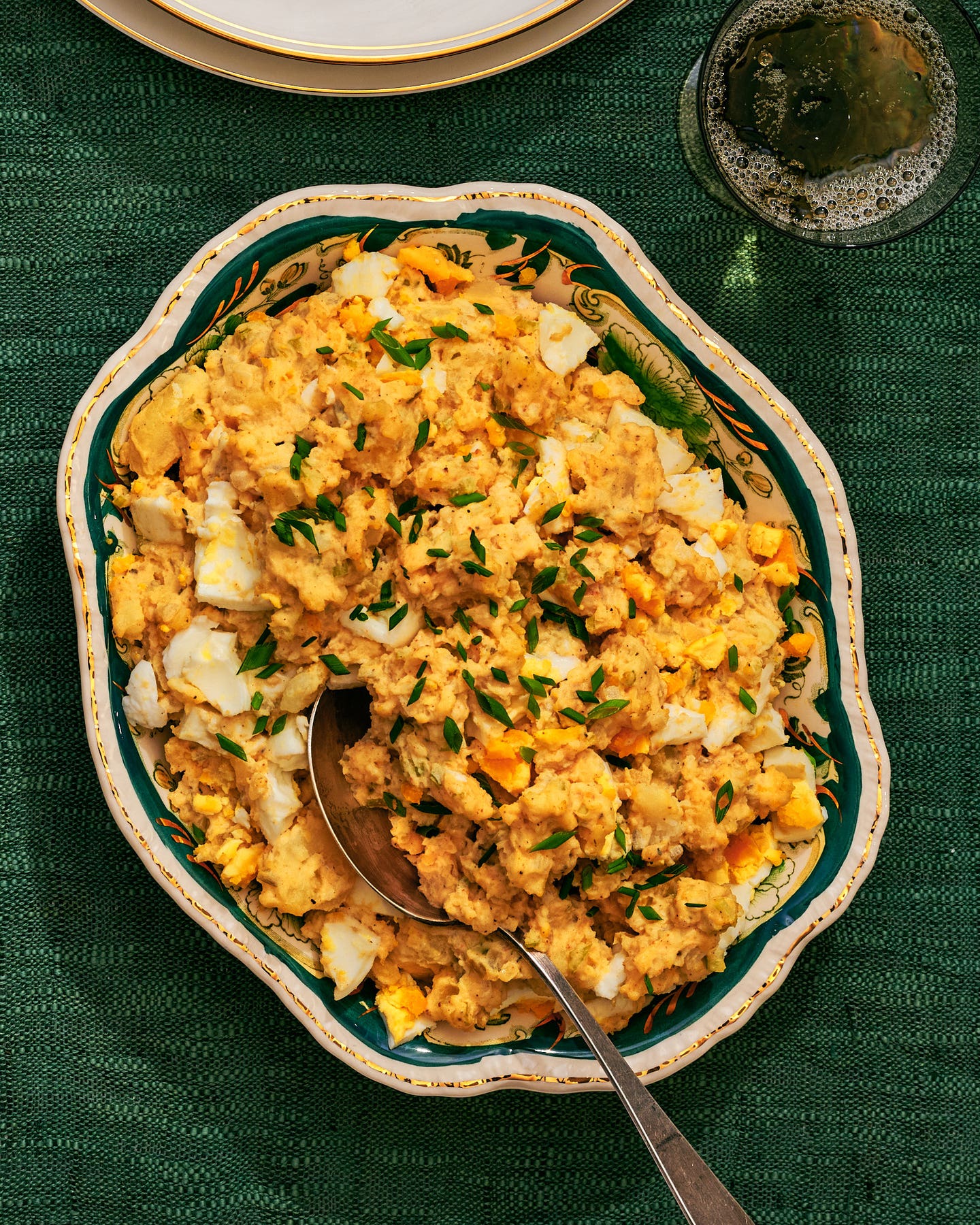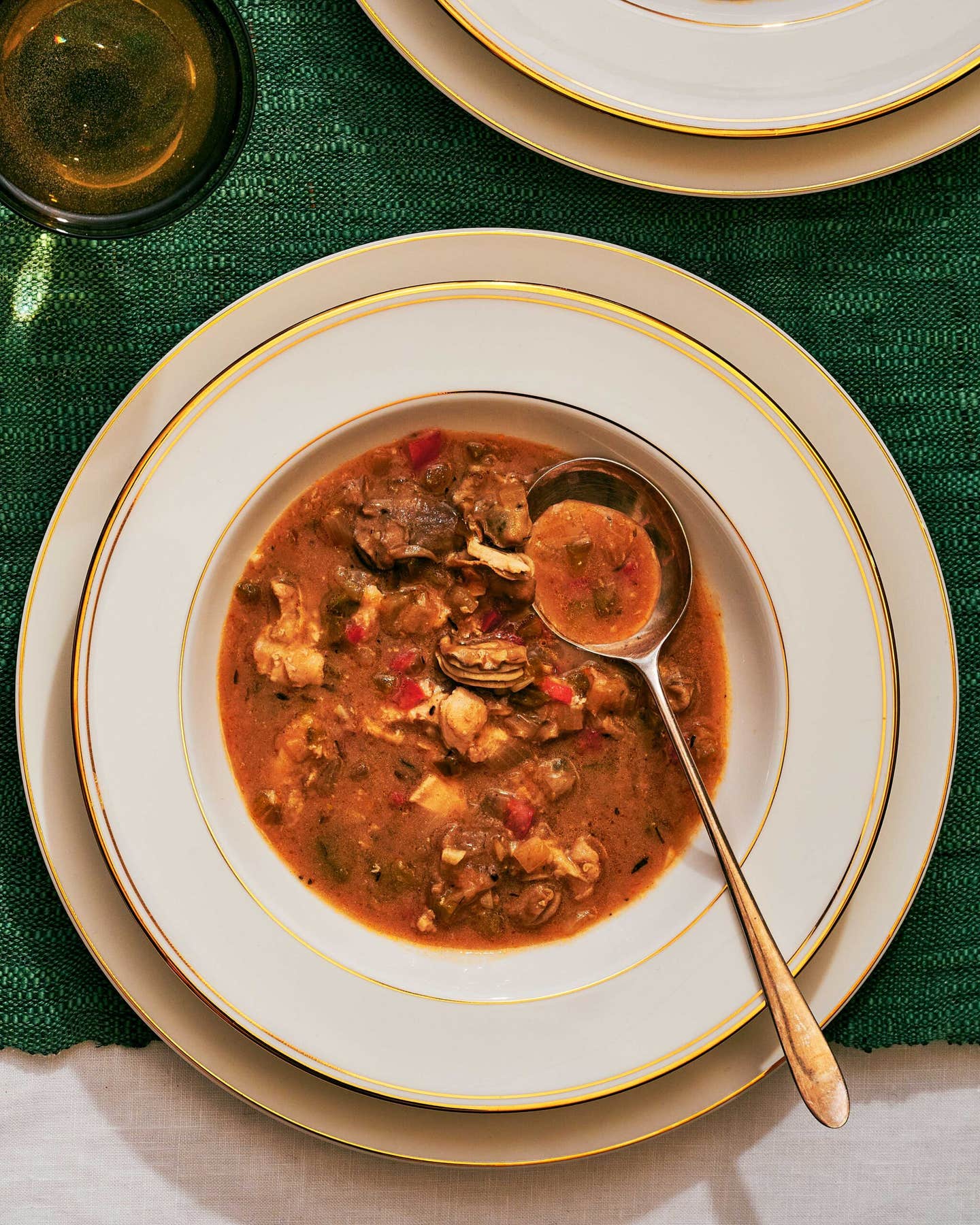
A World of Kimchi
Though cabbage (paechu) kimchi and daikon (mu) kimchi are the two best-known versions of the food, literally hundreds of other kinds exist. Here are nine varieties that hint at the astonishing diversity of flavor, color, and texture that kimchi can possess.
1. Tongchimi kimchi, or water kimchi, can be any number of fermented pickles that are often served in their brining water; this version contains Asian pear, daikon, scallions, pomegranate seeds, and chiles.
2. Uong kimchi is made with woodsy-tasting, crunchy burdock root and is usually aged for just a day or so.
3. For muchae kimchi, crisp daikon radishes are shredded into long strands before being fermented in a thick, pungent paste of chile powder and garlic.
4. The broad leaves of the herb known as perilla or beefsteak, which have a distinctive cinnamon-like flavor, are the base for kaennip kimchi, which has a refreshing bite.
5. Kongnamul kimchi consists of springy soybean sprouts fermented in a chile-garlic paste; this version is typically aged for only a short time so that the sprouts' nutty flavor still comes through.
6. Gat kimchi is an intensely flavorful pickle of mustard leaves and stems that have been fermented with anchovies and glutinous rice paste.
7. The big, pumpkin-like winter squash (called rumbo squash) that are harvested in the fall in Korea are frequently used as the base for a sumptuous, mildly sweet dish called hobak kimchi.
8. A kind of Korean wild lettuce called kodulpaegi is the base for this slightly sour kimchi; over time, the firm leaves become soft and pliable.
9. Naeng-myun kimchi is a striking, peppery pickle of thin-sliced daikon radishes that have usually been aged for only a few days and, often, garnished with scallions and sliced chiles.
Keep Reading
Continue to Next Story










